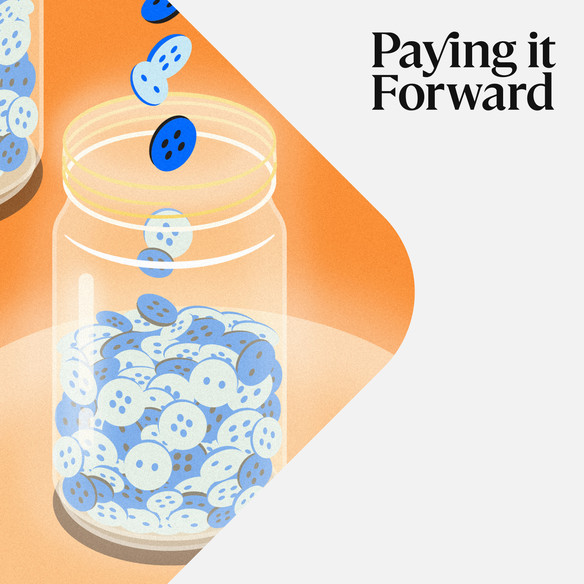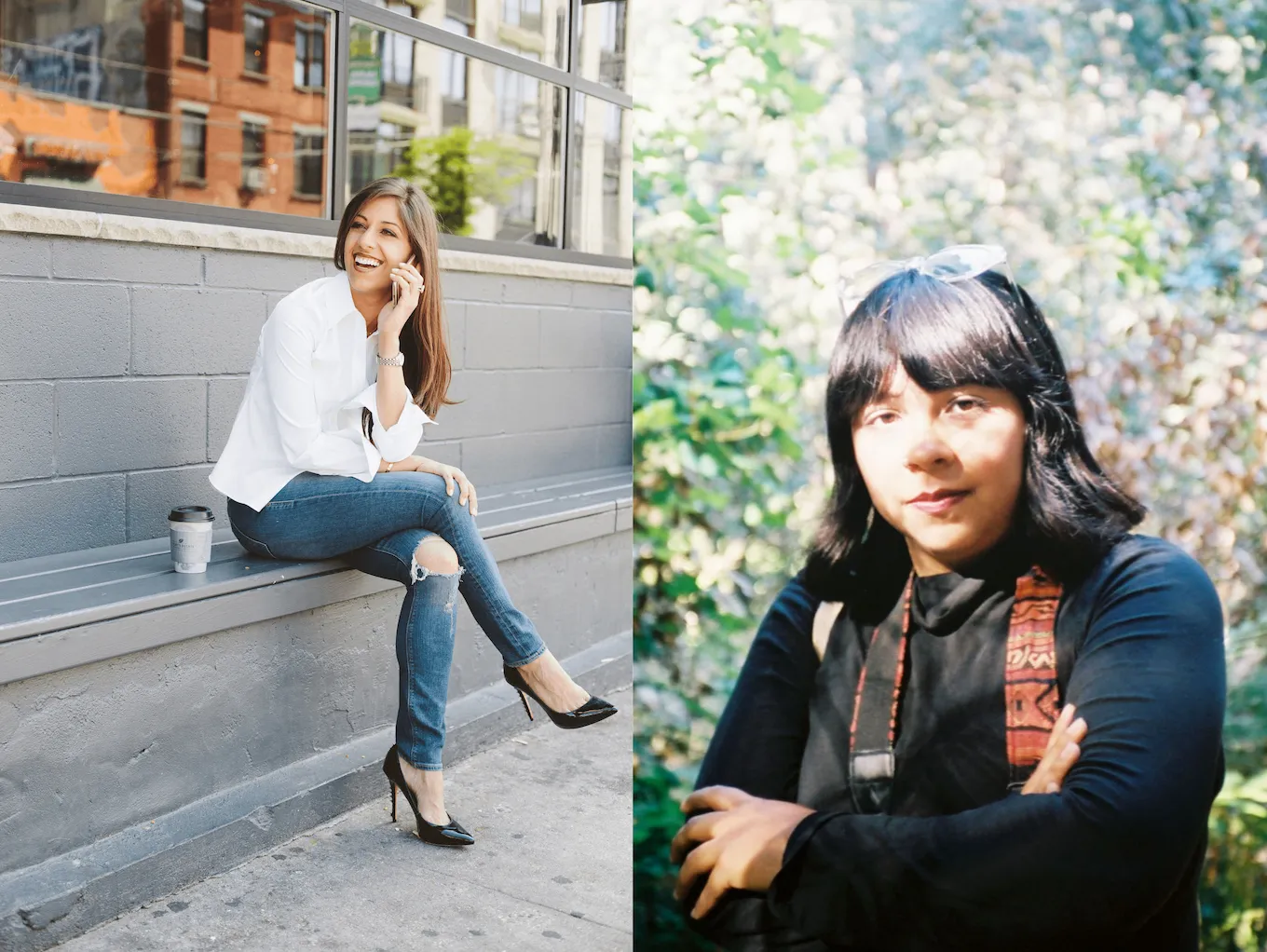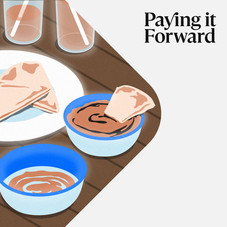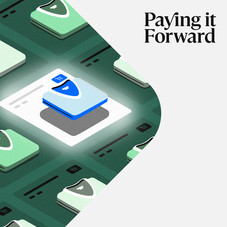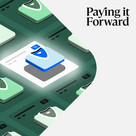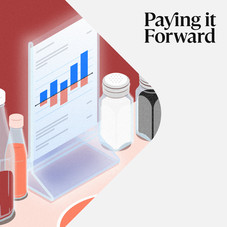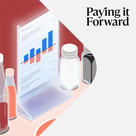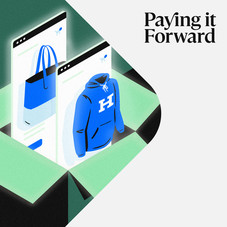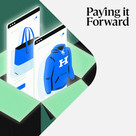Table of contents
This podcast is for educational purposes and does not constitute legal, financial, or tax advice. For specific advice applicable to your business, please contact a professional.
Wasi Clothing is a sustainable, ethical, and slow fashion brand based in Los Angeles, California. Owner Vanessa Acosta didn’t always see her company as her source of income. At first it was more of a side hustle. As her business grew she would reinvest in the business, growing it while holding on to another job. The COVID-19 pandemic pushed her to take the leap and work on Wasi Clothing full-time. Savings took on a whole new meaning for her.
“I was not at all thinking about savings or money when I started my business. I just had a horrible fashion industry experience that I was like, ‘Let me get out, and I’ll figure out as things go.’ That was back in 2017. And starting my business, starting to put designs online, I didn’t really have a financial plan,” says Acosta. “I look back at that person now, and I was like, ‘How could she not have saved money? She didn’t have any sort of capital to start her business.’ But I made it happen.”
Today she says Wasi has grown far beyond her initial expectations.
Stash Wealth Founder and CEO Priya Malani says saving for an emergency or a rainy day fund should be a fundamental aspect of your financial foundation.
“Life is inevitably going to throw you curve balls, and in order to be prepared for them and not use a credit card in the case of an emergency, you need to have a little bit of a runway. And that’s what we call an emergency fund,” Malani says. “It allows you to take a step back, not make any rash decisions, and cover life’s curve balls without affecting any of your other plans.”
A little about this episode on savings…
In our final episode of Paying It Forward, hear financial expert Priya Malani walk through the difference between APR, APY, and how interest rates can impact decisions, from what savings account you might pick to business credit cards. Then you’ll hear from Wasi Clothing owner Vanessa Acosta. When it comes to her small business, setting aside savings has meant being able to reinvest in her business, buying new equipment, and, this year, hiring new employees.
When it comes to running a small business, tackling financial decisions can be daunting and often overwhelming. Each week, we’ll focus on a common financial issue bringing in an expert in the field with actionable insights and a fellow business owner who has tackled it first hand.
Guests
- Vanessa Acosta, owner of Wasi Clothing, a sustainable, ethical, and slow fashion brand based in Los Angeles, California
- Priya Malani, founder and CEO of Stash Wealth, a financial planning and investment management firm in New York, New York
Full transcript:
You’re listening to Paying it Forward, a Square Podcast. When it comes to running a small business, tackling financial decisions can be daunting and often overwhelming. Each week we tackle one issue that could affect your business’ cash flow and hear from a fellow business owner experiencing it first hand.
On today’s episode we look at savings. Whether you’re saving for retirement or an emergency buffer, setting aside money for the future can be stressful for small-business owners trying to navigate day-to-day operations. We start at the beginning: interest rates. What does it mean for an interest rate to be good or bad? And how does it help you put money aside for your business?
Priya: A fundamental aspect of your financial foundation — your personal financial foundation — is having an emergency fund, a rainy day fund, whatever you want to call it. Well, the exact same thing applies to your business. Life is inevitably going to throw you curve balls, and in order to be prepared for them and not use a credit card in the case of an emergency, you need to have a little bit of a runway. And that’s what we call an emergency fund. It allows you to take a step back, not make any rash decisions, and cover life’s curve balls without affecting any of your other plans.
That’s Priya Malani, founder and CEO of Stash Wealth, a financial planning and investment firm. Before you get started with a loan or opening a savings account, here’s what you need to know about different interest rates.
Priya: APR is the fees and interest you’re paying expressed as an annual interest rate. What I mean by that is it doesn’t take any compounding into consideration, and that’s the main difference. With your APY, it includes the rate — the interest rate — but also the frequency that that rate is applied. So how often is interest applied to your balance? Because every time interest is applied to your balance, that interest begins to earn interest and essentially compound faster. That’s what compounding is. It’s your interest earning interest. Typically because of that interest earning interest, the APY you’ll find is going to be higher than the APR because of the compounding.
So one thing that’s good to note when you’re comparing loans or any other type of product that has an interest rate applied to it is the APR gives you an apples-to-apples comparison. It makes it very easy to look at two loans with the same term and compare the interest rate. The difference between interest rate and APR is that the interest rate is a flat rate. The APR is the rate plus any fees or discounts, and the APY is, as I said, fees minus discounts, plus frequency of compounding. At the end of the day, don’t worry about all the nuances. Focus on the fact that the lower the APR, especially when you’re the borrower, the better.
There are two types of rates that you might encounter.
Priya: There’s two types of rates you can acquire, and they vary based on the type of debt you’re borrowing. But you can have fixed rates or you can have variable rates. And typically fixed interest rates are struck at a slightly higher percentage, which means you’ll have to pay back a little bit more over time. But it’s fixed, which means it cannot change. Credit card interest rates are usually not fixed. You can repay them on time and effectively make your rate zero. Variable interest rates, on the other hand, they typically start lower, and people can find them very attractive because they start low — because that lender knows it will creep up over time and they’ll make their money on the back end. So what you can do is, if you’re taking out a loan at a variable rate, pay it back as soon as possible before the rate creeps up.
Our guest today is Vanessa Acosta, founder and owner of Wasi Clothing, based in Los Angeles, California. As a small-business owner, setting aside savings was tough at first. Now that she’s able to put more and more aside, she’s been able to reinvest in new equipment for her business and, this year, hiring employees.
Vanessa: I am the founder of Wasi Clothing. It’s a Los Angeles-based small business. It’s a sustainable and ethical clothing brand. The mission of my brand when I started it was to really represent many more walks of life that weren’t really seen in the fashion industry. It’s a place where people can shop and feel empowered, and it really represents a lot of communities, including my own. I’m Bolivian-American. Also as a Latina, as a woman, a lot of these types of people are empowered and represented in the clothing brand.
For me specifically, it’s really tied together. A lot of these things have been the mission since day one for Wasi Clothing. So when I wanted to start my clothing brand, I saw different parts of the industry and how I wasn’t morally for it. So when I decided to start my business, I knew I wanted to be sustainable. I knew I wanted to be ethical, and I knew that I wanted to hire people of my community and give them fair and equal wage. So as I’m building my business and investing in it, I’m also investing in the sustainability approach of it all. So it goes hand in hand: Investing in my business is also investing in the community because everyone who creates our garments at Wasi Clothing are all people of color. So I’m giving back jobs to our community, and it’s just kind of this cycle where we all kind of help each other.
Creating a slow fashion brand that prioritizes sustainability and equal wages, however, can come at a higher cost.
Vanessa: It is a little bit more expensive to be on the sustainable side of fashion. So there’s just a lot of steps that go into producing an item, where I’m not going to be financially hurting myself. For example, in the fashion industry the higher the minimums, the lower the price. Since I’m a sustainable brand that does low production, I have to do the extra work, the extra labor, and the extra research to find people who not only have lower minimums, so I’m not mass producing, but also have to have an environment, a warehouse that’s good for their workers, and it’s providing back to people of color. There’s a lot of these things that I have to factor in. So it’s definitely a lot more work.
Being in the sustainable realm, it is more costly to produce some of these items, which is why when I decide my pricing on my products, there’s a reason why some of them might be high. And I know a lot of consumers aren’t used to that yet. But I know that a lot of consumers are trying to get around that and really trying to understand why some sustainable fashion is more expensive — because we have to go through all of this research, all of this extra labor, that fast fashion corporations don’t need to go through because they’re mass producing. They’re not worried about the conditions that their workers are working in. They’re not worried about any of these things. All they worry about is let’s make as much and let’s sell as much, whereas Wasi Clothing is way more conscious. And it goes from sourcing our vendors and manufacturers all the way to really being conscious and intentional about our pricing.
Looking back now, incurring higher wages to build Wasi in the way that she wanted wasn’t the only risk that paid off.
Vanessa: I’ll start in the beginning because I think it’s kind of relevant. I was not at all thinking about savings or money when I started my business. I just had a horrible fashion industry experience that I was like, “Let me get out, and I’ll figure it out as things go.” That was back in 2017. And starting my business, starting to put designs online, I didn’t really have a financial plan. So I look back at that person now, and I was like, “How could she not have saved money? She didn’t have any sort of capital to start her business.” But I made it happen. And when I started to realize that people were really responding well to the clothing, I was like, “Okay. This is starting to be a legitimate business. This isn’t just like a passion project or a hobby that I’m doing anymore.”
So that’s when 2018, 2019, I decided to start — everything that I was making through online sales, I was just putting back into the business. I wasn’t making any profit whatsoever. But being a small-business owner and being a freelancer and just being a creative in the city, kind of have to be a Jack of all trades. So I was doing multiple things, not only just running the business — being a freelance photographer, being a freelance graphic designer — to try to make more money to put back into my business. I think that a lot of small-business owners don’t like to talk about. It’s kind of like a stigma where you have to be full-time business owner, and that’s not the case. I ended up getting a full-time job to help support my business — to help build it — and that’s when I finally started saving money. From 2018 through 2020, I was working at this job and it was really helping me build the business. I was able to put more money and invest more money into the business.
So I definitely have savings now. I definitely am building more money and definitely have the goals to grow the business, and the business has grown exponentially. I am now starting to hire employees. So there’s definitely a lot more money coming in and out. Now that I’ve built this business where hundreds of thousands of people are looking at it, I’m like, “Okay. It’s time to be responsible with that money, to have the savings, to apply for loans, to look for capital, to look for investors, to be able to grow this business and invest more in it so it can grow and provide more for the customer.”
Like what you’re hearing? Be sure to also check out Talking Squarely, a Square podcast where independent business owners, just like you, get real about the ups and downs of running a business.
Vanessa: So luckily, I was born into a family with accountants and math people. They were always very vocal about telling me to save, to be smart with my money, and I was the complete opposite of that. Being a fashion kid, I wanted to spend money on $500 pairs of designer shoes at 20 years old with a part-time job. So I was not the most financially responsible, and of course being a young person, I’m not going to listen to my parents. But now that I look back, they were trying to give me all of that knowledge so I can prepare for where I am now, and I take note of all the advice that they gave me years later now. And now I’m very responsible with my money. I’m such a budget queen. I have to know the ins and outs of everything. So I’m like, “Explain it to me so I know how to do it myself.” And it’s really helped having my parents be that. They also really helped me out with building my credit at a very young age.
I didn’t understand what that meant. What’s a credit? Why does it matter? And it is so important to have good credit, to make all of these business decisions to look good on paper, and I think a lot of small businesses can probably relate to this. A lot of creatives can relate to this. We’re passionate about our art. We want to create. We want to have fun. We want to live this freelancer, entrepreneurial life, but then also at the same time, a lot of us forget that we have to look good on paper, because that affects our business decisions as well in the future — if we want to apply for a new office or a new warehouse or apply for a loan, et cetera. All that stuff. My parents have definitely guided me with this stuff, and now that it’s grown into a bigger business and it continues to grow, I’m not one to give all of this stuff to someone else to handle, but I’m just starting to do that.
I just started looking into small-business loans. I just started flirting with the idea of trying to pitch this business to investors and get some capital. At the beginning of my business, it definitely didn’t seem doable or tangible, a thing that I could really do based on statistics that I would read. I think — I don’t know if it’s changed — but the last time I was reading into trying to get investors for the business, the statistics showed that 0.01% of venture capitalists invest in specifically Latina small businesses. So it didn’t seem like a doable thing for me in the past when I decided to start this. Up until 2021, I’ve always been a “I’ll just do it myself” kind of person. “I guess I don’t need to apply for loans. I guess I don’t need to look for investors.” But now I’m realizing that a lot of industries are changing. So I feel like back then, no interest rates weren’t even relevant for my decision-making for my business. But now that it’s more possible, I see that people are investing in people-of-color businesses and Latina small businesses. I think that now interest rates will definitely be more prevalent in my decision-making for the business.
Acosta says she’s now in a place where she has been able to start outsourcing sewers and cutters, even hiring employees to handle packaging and shipping responsibilities so she can focus on designing. For others just starting out, here’s the advice that has helped her build Wasi Clothing.
Vanessa: Even putting a little bit of money aside will help to always have an emergency fund in case things go crazy. And I think in 2021 — after 2020 and what we went through last year — it’s definitely in everyone’s minds to always have savings, to always have that emergency fund. Because I was lucky for my business to do well last year even though I was laid off. I had a little worry there for a second. “What am I going to do? I am not financially ready to not have a job,” and all of the things that went through everyone’s heads last year. And I think that really taught a lot of us to just put a little bit aside, just put a hundred dollars here, a hundred dollars there, even fifty dollars. Always have that emergency fund because you never know what’s going to happen. You never know when there’s going to be a yearlong, multi-yearlong pandemic happening.
Thank you to Priya Malani and Vanessa Acosta for their thoughts on savings. Priya Malani is founder and CEO of Stash Wealth, a financial planning and investment management firm. Vanessa Acosta is the founder and owner of Wasi Clothing. Find them at Wasi Clothing on Instagram, Twitter, Facebook, and TikTok, or check out their online site at wasiclothing.com. She says if you want to support the business, reshare their content or give them a follow.
With Square banking, your payments, business banking accounts, and cashflow are all synced together seamlessly. Watch your sales flow directly into your accounts. So accessing and moving your money as fast, easy, and can even be automated. Sell, save, spend, and borrow as fast as you need to. To learn more, check out squareup.com/banking.
You’ve been listening to Paying it Forward, a Square production. This episode was produced by Deborah Findling, Camille Kail, and Clara Shannon. Our music was composed by Jordain Wallace, with sound recording by Sorrentino Media and D.R. Baker. Thanks for listening.
All loans are issued by Square Financial Services, Inc., a Utah-chartered industrial bank, member FDIC, located in Salt Lake City, Utah. A minimum payment of 1/18 of the initial loan balance is required every 60 days, and full loan repayment is required within 18 months. Actual fee depends upon payment card processing history, loan amount, and other eligibility factors. Loan eligibility is not guaranteed. All loans are subject to credit approval. Square, Inc. is a financial services company, not a bank. Banking services are provided by Square’s banking affiliates, Square Financial Services, Inc. or Sutton Bank, members FDIC.
![]()

